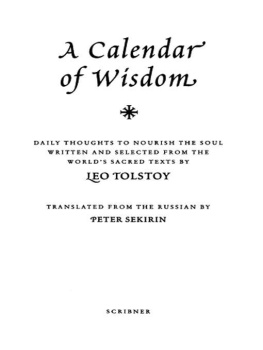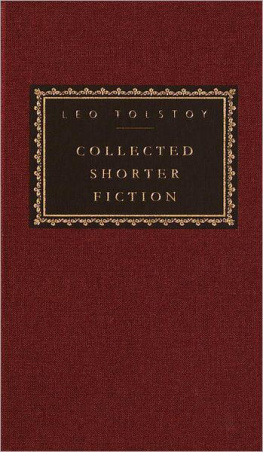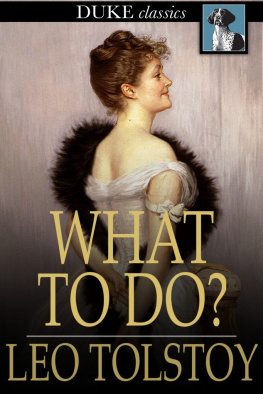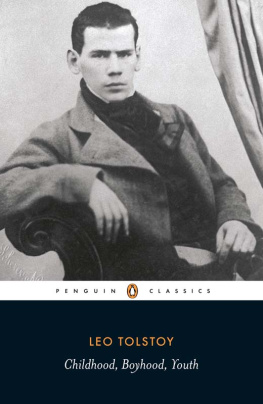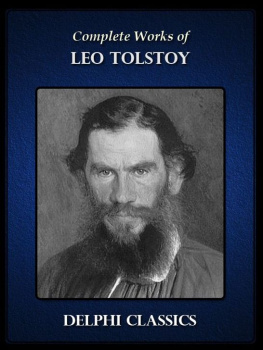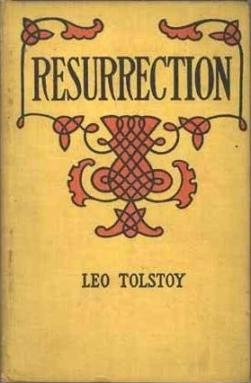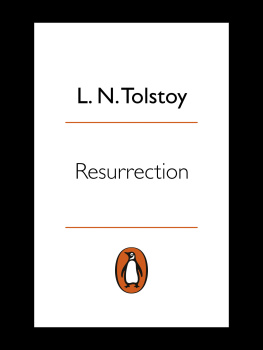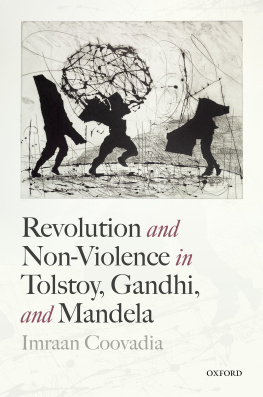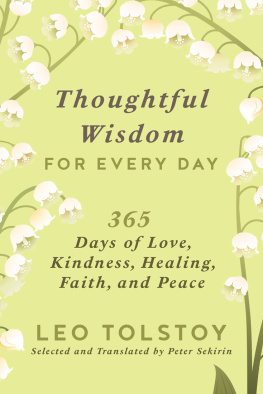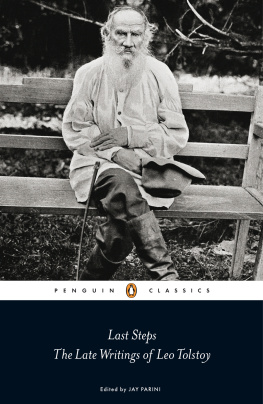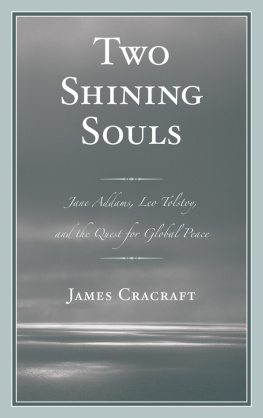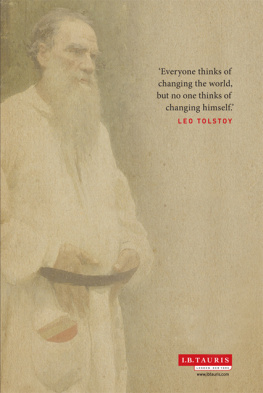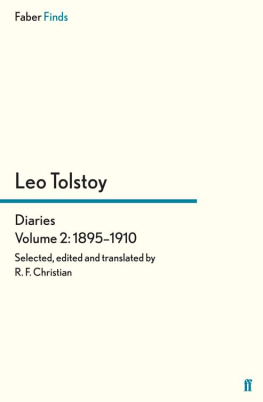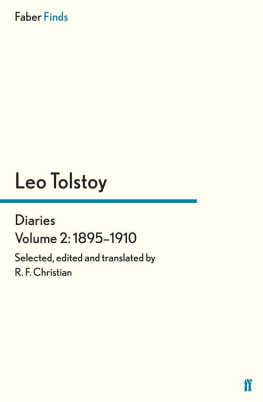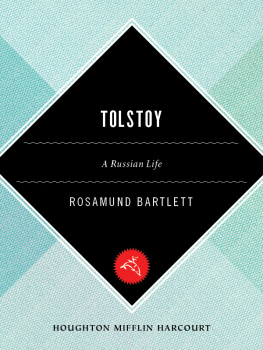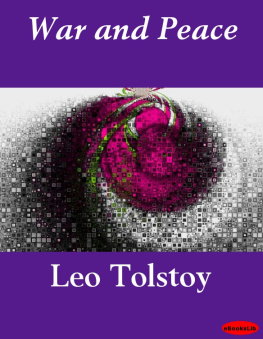A Calendar of Wisdom

DAILY THOUGHTS TO NOURISH THE SOUL
WRITTEN AND SELECTED FROM THE
WORLDS SACRED TEXTS BY
LEO TOLSTOY
TRANSLATED FROM THE RUSSIAN BY
PETER SEKIRIN
SCRIBNER
This translation is dedicated to MELISSA TEMERTY

SCRIBNER
1230 Avenue of the Americas
New York, NY 10020Introduction, translation, and compilation copyright 1997 by Peter SekirinAll rights reserved, including the right of reproduction in whole or in part in any form. SCRIBNER and design are trademarks of Simon & Schuster Inc.DESIGNED BY ERICH HOBBINGSet in Stempel GaramondManufactured in the United States of America9 10Library of Congress Cataloging-in-Publication DataTolstoy, Leo, graf, 1828-1910.[Krug chteniia. English, Selections]A calendar of wisdom : daily thoughts to nourish the soul / written and selected from the worlds sacred texts by Leo Tolstoy; translated from the Russian by Peter Sekirin.p. cm.This translation, drawn from the enl. and completely rev. second ed., does not include the fifty-two stories called The Sunday reading stories.Includes index.(alk. paper)1. Conduct of lifeQuotations, maxims, etc. I. Sekirin, Peter. II. Title.BJ1581.2.T626213 1997087.1dc21 97-23501CIPISBN-13: 978-0-6848-3793-2eISBN-13: 978-1-439-13095-7www.SimonandSchuster.com
TRANSLATORS ACKNOWLEDGMENTS

I would like to express my deepest and most sincere acknowledgments to the following people:
professors who introduced me to Russian literature: K. Lantz, R. Bogert, Ch. Barnes, H. Marshall, R. Lindheim, O. Bakitsh, C. Bedford, M. Valdez, L. Hutcheon; and other professors and students of the Slavic Department and the Department of Comparitive Literature of the University of Toronto; my literary agent, Ivy Fischer Stone, of the Fifi Oscard Agency; my friend Kim Yates and Stella Cho, who read the manuscript; my parents, Vera and Vsevolod Sekirin; the staff at Scribner, especially my editor Scott Moyers and Susan Moldow; Their wisdom and tireless support have helped this project to become a reality.
PETER SEKIRIN, Torbonto 1996
TOLSTOY AND THE CREATION OF A Calendar of Wisdom

PETER SEKIRINThis was Leo Tolstoys last major work. With it, he fulfilled a dream he had nourished for almost fifteen years, that of collecting the wisdom of the centuries in one book meant for a general audience. Tolstoy put a huge amount of effort into its creation, preparing three revised editions between 1904 and 1910. It was his own favorite everyday reading, a book he would turn to regularly for the rest of his life.The original idea for this work appeared to come to Tolstoy in the mid-1880s. His first recorded expression of the concept of A Calendar of Wisdom A wise thought for every day of the year, from the greatest philosophers of all times and all peoplecame in 1884. He wrote in his diary on March 15 of that year: I have to create a circle of reading for myself: Epictetus, Marcus Aurelius, Lao-Tzu, Buddha, Pascal, The New Testament. This is also necessary for all people. In 1885, he wrote in a letter to his assistant, Mr. Chertkov: I know that it gives one great inner force, calmness, and happiness to communicate with such great thinkers as Socrates, Epictetus, Arnold, Parker. They tell us about what is most important for humanity, about the meaning of life and about virtue. I would like to create a book in which I could tell a person about his life, and about the Good Way of Life.The process of collecting these thoughts took over fifteen years. Tolstoy began writing between December 1902 and January 1903. Then in his late seventies, he had fallen seriously ill; while meditating about the meaning of life and death, he was inspired to begin compiling what he then called A Wise Thought for Every Day . When he finally sent the book to his publisher, Tolstoy wrote in his diary: I felt that I have been elevated to great spiritual and moral heights by communication with the best and wisest people whose books I read and whose thoughts I selected for my Circle of Reading . He would often return in his diary to meditate upon this book, repeating variants of What can be more precious than to communicate every day with the wisest men of the world? Tolstoy carefully selected the contributors to this volume, among the very best writers, as he repeated to his colleagues and friends. They represented a wide variety of philosophical views, cultural backgrounds, and historical periods: It will be a big surprise to the readers, Tolstoy wrote, that together with Kant and other famous thinkers, they will find in my book thoughts by Lucy Malory, an unknown journalist from the United States, from Oregon. The first edition appeared in 1904 under the title Thoughts of Wise Men . It saw three editions during Tolstoys lifetime, between 1904 and 1910, each published with a different subtitle: The Way of Life, Circle of Reading, and A Wise Thought for Every Day .Between 1904 and 1907, Tolstoy worked on the enlarged and completely revised second edition, from which this, its first English translation, is drawn. In mid-August 1905 he wrote the introduction that follows and noted in his diary: I have revised and enlarged my Calendar, now it is twice as big. For two months I did not read anything else, neither newspapers nor magazines, and I felt so good. I became more and more astonished by the ignorance, and especially by the cultural, moral ignorance of our society. All our education should be directed to the accumulation of the cultural heritage of our ancestors, the best thinkers of the world.The major difference between the first edition ( Thoughts of Wise Men ) and the second ( A Calendar of Wisdom ) was that Tolstoy now grouped the thoughts according to topics for a certain day, week, and month. He wrote on June 3, 1904, in his diary: I am busy with the Circle of Reading . I cannot do anything else. I have selected thoughts and grouped them into the following major topics: God, Intellect, Law, Love, Divine Nature of Mankind, Faith, Temptations, Word, Self-Sacrifice, Eternity, Good, Kindness, Unification of People (with God), Prayer, Freedom, Perfection, Work, etc. Tolstoy added about eight hundred of his own thoughts, written during his many years of meditation, or taken from previous diary entries. He generally started each day with an opening thought of his own, added quotes by other sources, and finished each day with a closing thought of his own.Additionally, he wrote a short story, or vignette, three to ten pages in length for the end of every week. Each story corresponded to that weeks moral, philosophical, or religious topic; he prepared fifty-two stories in all and called them The Sunday Reading Stories . The majority of these fifty-two stories were written by Tolstoy especially for this work; the rest were selected and adapted from writings by Plato, Buddha, Dostoevski, Pascal, Leskov, Chekhov, and others. Tolstoys prose style in these Sunday Reading Stories is very different from the sophistication of his earlier novels. These stories, which were later greatly admired by Pasternak and Solzhenitsyn, were written in a clear, simple, almost primitive language, designed, as they were, for a wide and general audience. In them, Tolstoy combined simplicity of form and philosophical depth. Because these stories did not appear in all editions, and because they are as a whole quite long, they do not appear in this edition.On December 21, 1904, after reading the galley proofs of the second edition called The Calendar: The Circle of Reading for Every Day, Tolstoy wrote in his diary: During this last day I have descended from the spiritual and moral heights where I was all this time when I communicated with the best and wisest thinkers of the world when I created my Circle of Reading. This title was changed in the second revised edition, published in 1905-1907, to Wise Thoughts by Many Writers on Truth, Life, and Behavior Collected and Arranged for Every Day of the Year by Leo Tolstoy . From its first publication, the book was always present on Tolstoys desk; it became his favorite book during the last five years of his life. Every day, from 1905 to 1910, he read thoughts presented in the book for the corresponding day of the year, and he recommended the same habit to all his friends. On May 16, 1908, he wrote to a man named Gusev: I cannot understand how some people can live without communicating with the wisest people who ever lived on Earth? I feel very happy every day, because I read this book.Tolstoy prepared a third revised, shortened, and simplified edition which appeared in print under the new title The Way of Life in 1910, the last year of his life. He wished to make the book easily comprehensible for even the simplest and least educated peoplepeasants and children. Most probably, Tolstoy compared A Calendar of Wisdom to War and Peace when he wrote that To create a book for the masses, for millions of people is incomparably more important and fruitful than to compose a novel of the kind which diverts some members of the wealthy classes for a short time, and then is forever forgotten. The region of this art of the simplest, most widely accessible feeling is enormous, and it is as yet almost untouched. Other editions appeared in Odessa and St. Petersburg in 1911-1912. A German critical edition (translated by E. Schmidt and A. Schkarvan, Dresden: Karl Reissner, 1907) included the sources of his numerous quotes.An edition of A Calendar of Wisdom was published in Russia in 1912, but after the Russian Revolution publication was forbidden under the Soviet regime, because of the books spiritual orientation and its numerous religious quotes. When it was again published in Russia, in 1995, after the recent democratic reforms, it enjoyed tremendous success, selling over 300,000 copies.It has never before been translated into English. The first English translation of A Calendar of Wisdom will be a real discovery for the English-speaking reader. Created by one of the worlds greatest novelists and thinkers to represent the very best of the worlds spiritual heritage, it draws on the greatest works of religion, philosophy, and literature the world has yet seen. It belongs among the very best creations of human genius, a work which will serve its readers as a practical spiritual guide on how to live in peace with oneself and how to live a life filled with kindness, satisfaction, and happiness. Tolstoys original goal was the delivery of wisdom to the widest possible number of people, to entertain millions of readers. This aim remains as compelling now, in this time of increasing spiritual need, as it was then.
Next page
 SCRIBNER
SCRIBNER


